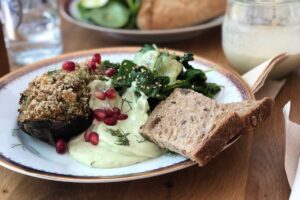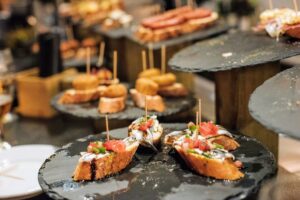Last Updated on September 28, 2023 by | Published: August 20, 2019
As the capital of one of the healthiest countries in the world, you’re spoiled for choice when it comes to grocery stores in Madrid.
There are supermarkets, indoor and outdoor markets, fishmongers, charcuteries, butchers, bakeries, and delis everywhere. You can find everything you want just by stepping outside your front door and going for a stroll through the barrio on a sunny day.
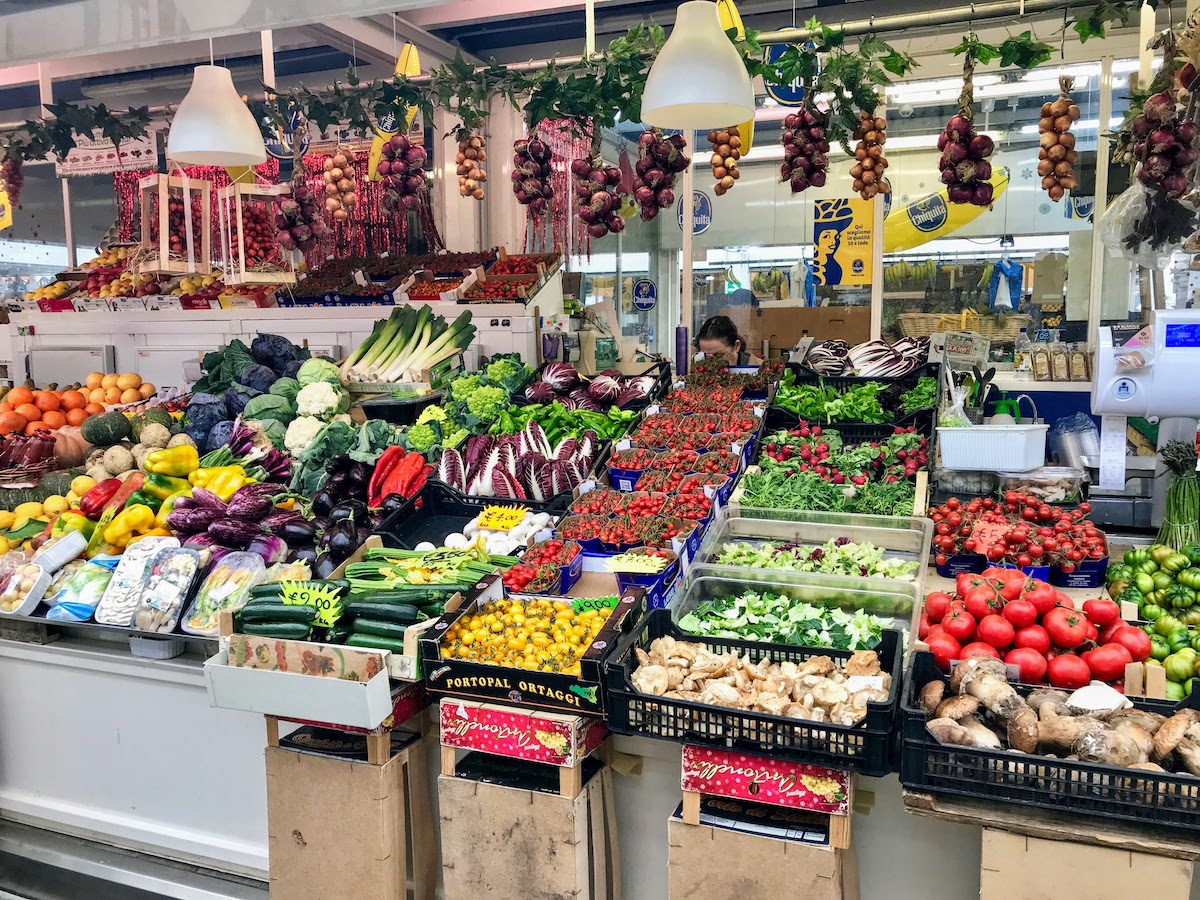
But how do you go about deciding where to get the good stuff? For starters, it’s time to discard what you thought you knew about grocery shopping, and learn to think like a local.
In most cases, that means saying goodbye to getting everything in one place. Forget the supermarket in Madrid—instead, think individual shops and market stalls that specialize in just one thing, and sell the highest-quality versions of it.
Here’s how to navigate the different options for grocery stores in Madrid, and ensure you get the best of the best.
Types of Food Shops in Spain
Before we get into where to buy groceries in Spain, it helps to have a brief overview of what the different types of shops are called. Here are some words used for common types of food establishments in Spain. You may see these at food markets, as standalone shops on a street, or even as sections in a large grocery store.
- Frutería: Greengrocer
- Carnicería: Butcher (in Madrid, this often doesn’t include poultry, though carnicerías in other parts of Spain usually do)
- Charcutería: Deli
- Pollería: Poultry shop
- Pescadería: Fishmonger
- Panadería: Bakery that makes bread and rolls
- Pastelería: Bakery that makes pastries and sweets
Indoor Food Markets
Every neighborhood has its own indoor market, and shopping there is an integral part of Spanish culture. Many locals are on a first-name basis with vendors, who probably already know what many of their customers want out of habit. That’s pretty impressive for such a large capital city—each neighborhood is like a village.
Most markets in Madrid will have a bar or even a restaurant, and it’s perfectly normal to have a quick drink, a cup of coffee, or even a full meal before or after picking up your goods.
What to Buy at an Indoor Food Market in Madrid
- Produce. Here’s the key equation for getting fruit and vegetables: seasonal plus local equals better tasting produce and more sustainable agriculture. Find out what’s in season, make sure it’s grown locally and go for that.
- Cured meats and cheeses. Look for delis and charcuteries, then brace yourself for some major indecision. Acorn-fed Iberian ham, cecina (dried and salted beef) from León, Asturian blue cheese, Spain’s famed Manchego—you name it, any deli stand worth its salt will have it.
- Seafood! Wait, what? Madrid doesn’t have a sea. True. But as the capital of a country surrounded by the Mediterranean and the Atlantic, the freshest and best quality seafood is shipped to Madrid first thing every morning.
- Beef, pork and poultry at the butcher (often in separate stalls). On the other hand, sometimes you’ll find the butcher sharing the same stall with those selling cheeses and cured meats.
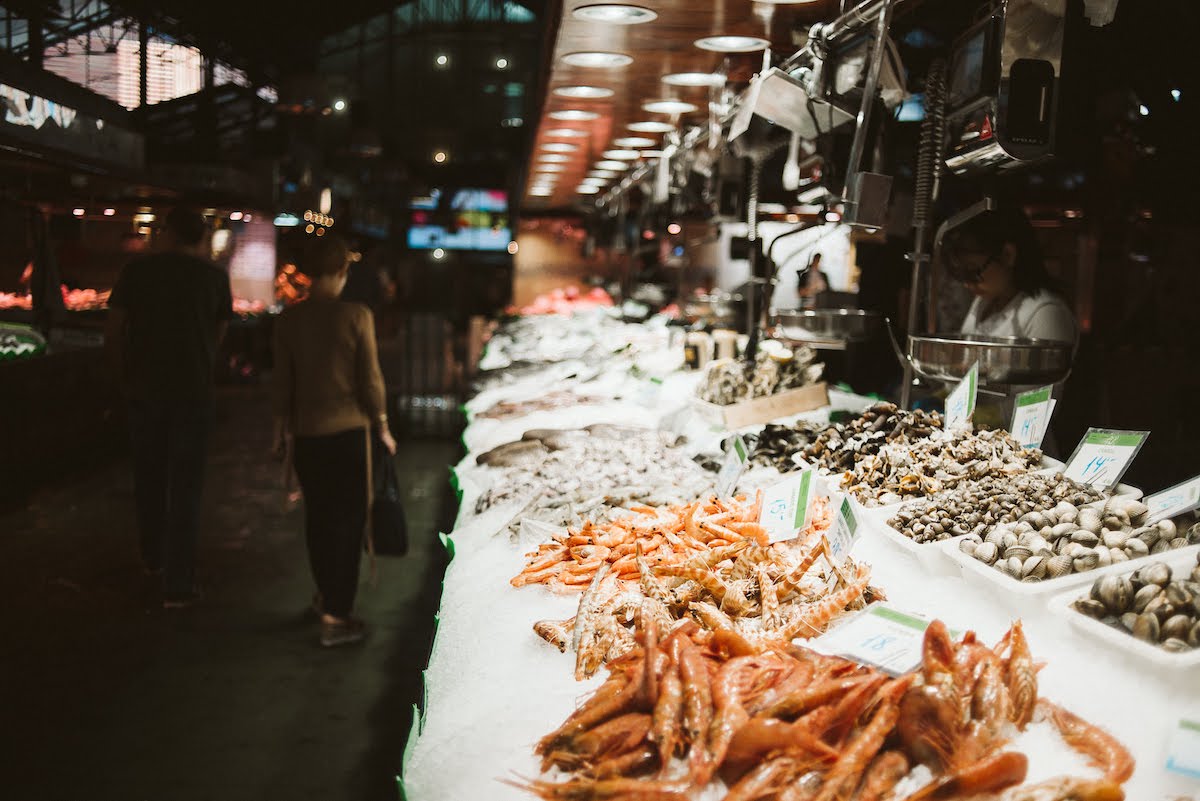
Tips for Shopping at an Indoor Food Market in Madrid
- Go in the mornings to beat the crowds. Most stalls close in the afternoons, between 2–5 p.m., and some won’t open again till the next day.
- Don’t expect an orderly single-file line. Sometimes it’s as simple as taking a ticket from the dispenser to know when your turn is. Otherwise you need to find out who’s last in line, by asking, “¿Quién es el último?” (Who’s last?). Wait for that person to take their turn and then when the vendor to calls out “Siguiente!” (Next!), you’re up!
- Usually the vendor does the picking for you, so don’t touch the products!
- Get used to thinking in kilos and grams, as opposed to pounds (if that’s the weight measurement used where you’re from). A kilo is around 2.2 pounds.
- Don’t buy seafood on Mondays. In Spain, fishermen don’t go fishing on Sundays. You want your aquatic goods fresh!
- Keep things local and seasonal by buying organic produce directly from the growers themselves at a weekend farmer’s market.
For a more in-depth explanation on market etiquette in Spain, take a look at our complete guide to Spanish food markets.
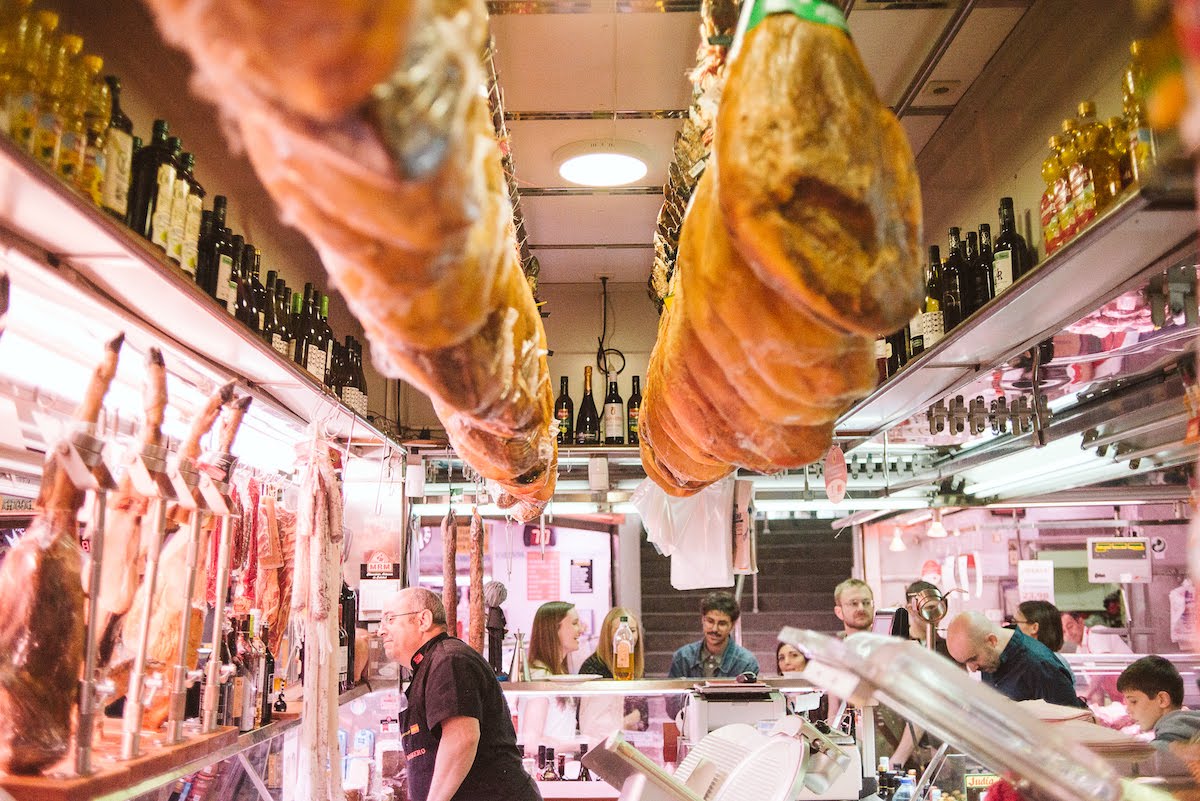
Delis, Gourmet Shops, and Vegetarian & Vegan Grocery Stores in Madrid
Remember that much of what you can get from indoor markets is also available at individual shops lining your neighborhood streets. What to get and the protocol for getting it is pretty much the same as at the indoor markets, but it can be hard to know where to go.
If you want the best of the best, rest assured that Madrid is home to many well-established gourmet food shops that are clean, cozy, and welcoming. There’s also a growing number of vegan and vegetarian shops in Madrid to satisfy the growing demand for plant-based products.
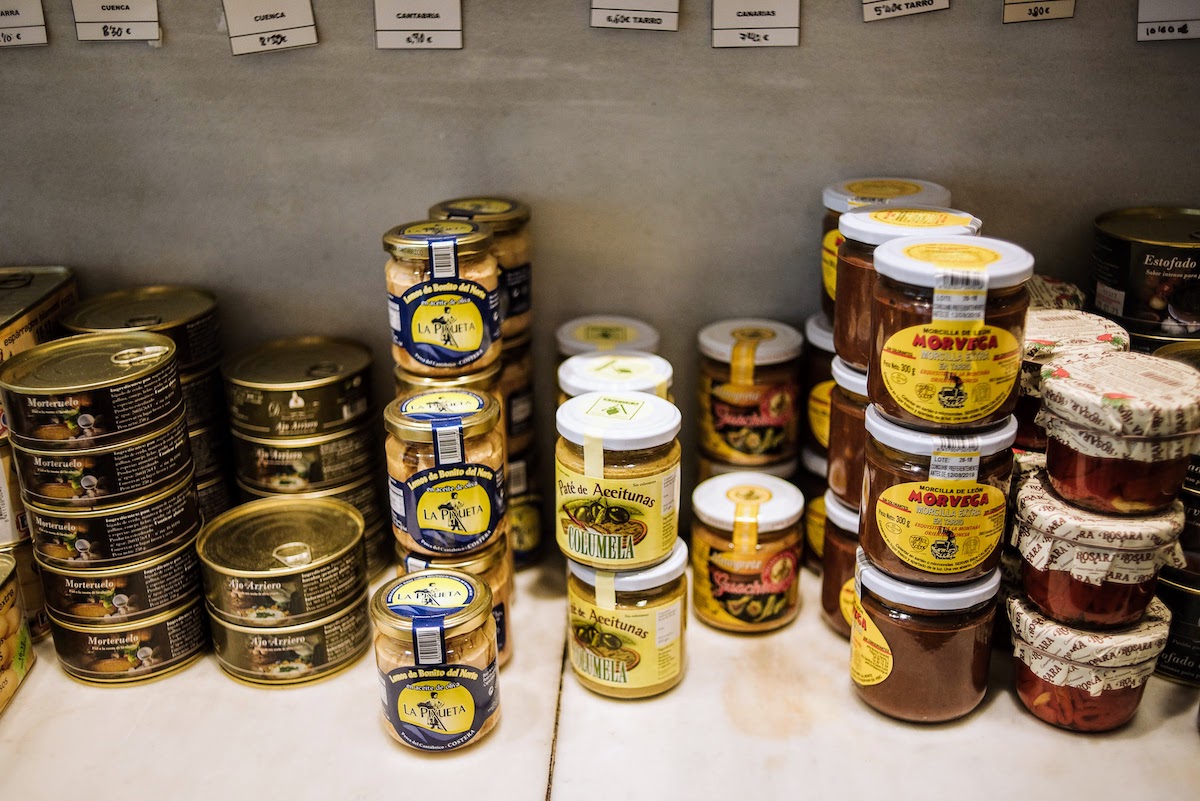
Ultramarinos
These gems are basically old school Spanish convenience or grocery stores. Sadly there aren’t as many left as there used to be, but a select few are still holding on. Shopping at one is a very Spanish way to stock up on all kinds of foodie treasures including honey, liquor, salted cod, sacks of legumes, pickled peppers and many special canned goods.
At some ultramarinos, you might want to bring an empty bottle of wine or olive oil so you can fill it up straight from the barrel!
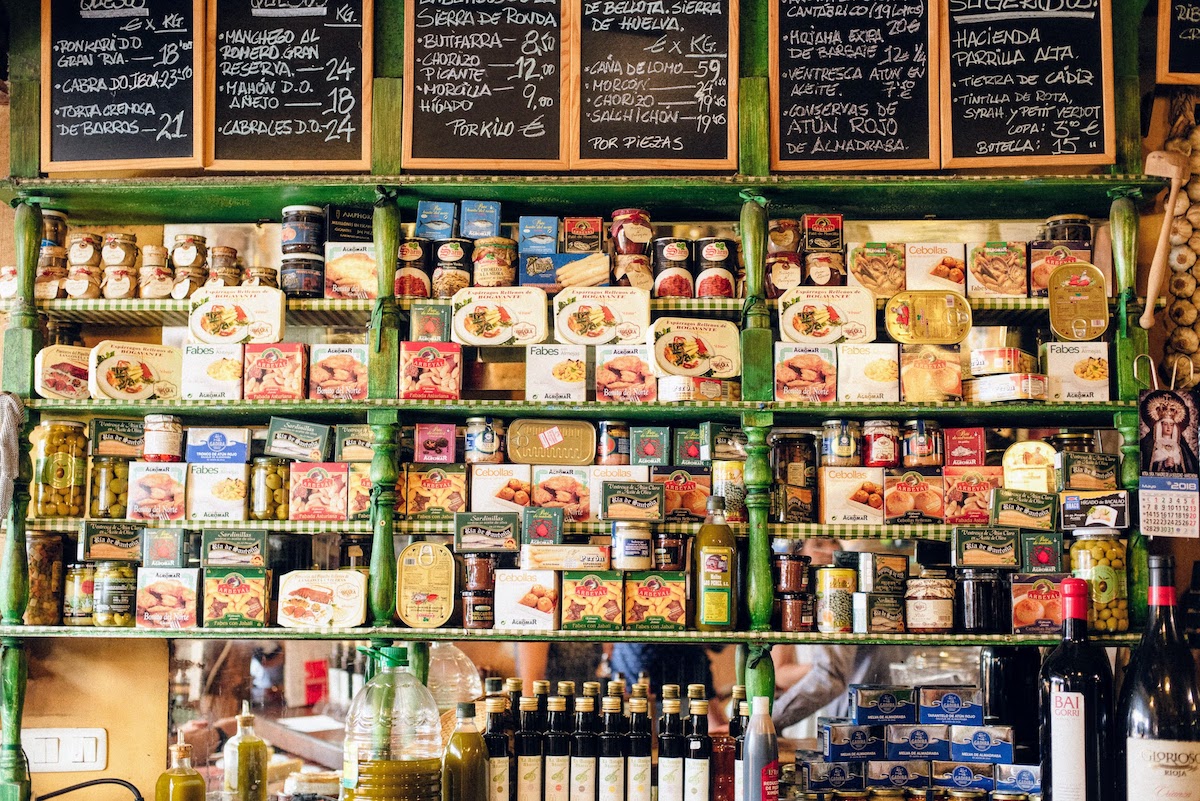
Tips for Shopping at Ultramarions
- Just as in the indoor markets, ask “Quién es el último?” (“who’s the last in line?”). Lines aren’t a thing here. Knowing who’s last will let you know who you go after.
- Once again, you’ll be ordering by weight, and in kilograms.
- Since most ultramarinos have been replaced by the supermarket in Madrid and newer convenience stores, some of those remaining have been modernized with their own bar and a restaurant, where you can taste their goods before deciding what to buy! Cuenllas is a good example of this.
Insider’s tip: Madrid is home to the oldest ultramarino in Spain, opened in 1870. A step inside is a blast into the past. Don’t miss it!
Bakeries
It is indeed a Spanish custom to go to the nearest bakery—which very well may be right below your apartment—and snag a big loaf of recently baked bread to take home for breakfast.
The thing is, in Spain you’ve got panaderías—bakeries that mainly sell bread—and pastelerías, or patisseries, which offer lots of pastries and cookies and all manner of sweet goodies.
For the true bread lovers out for the best loaves, here’s a list of tips collected from the experts.
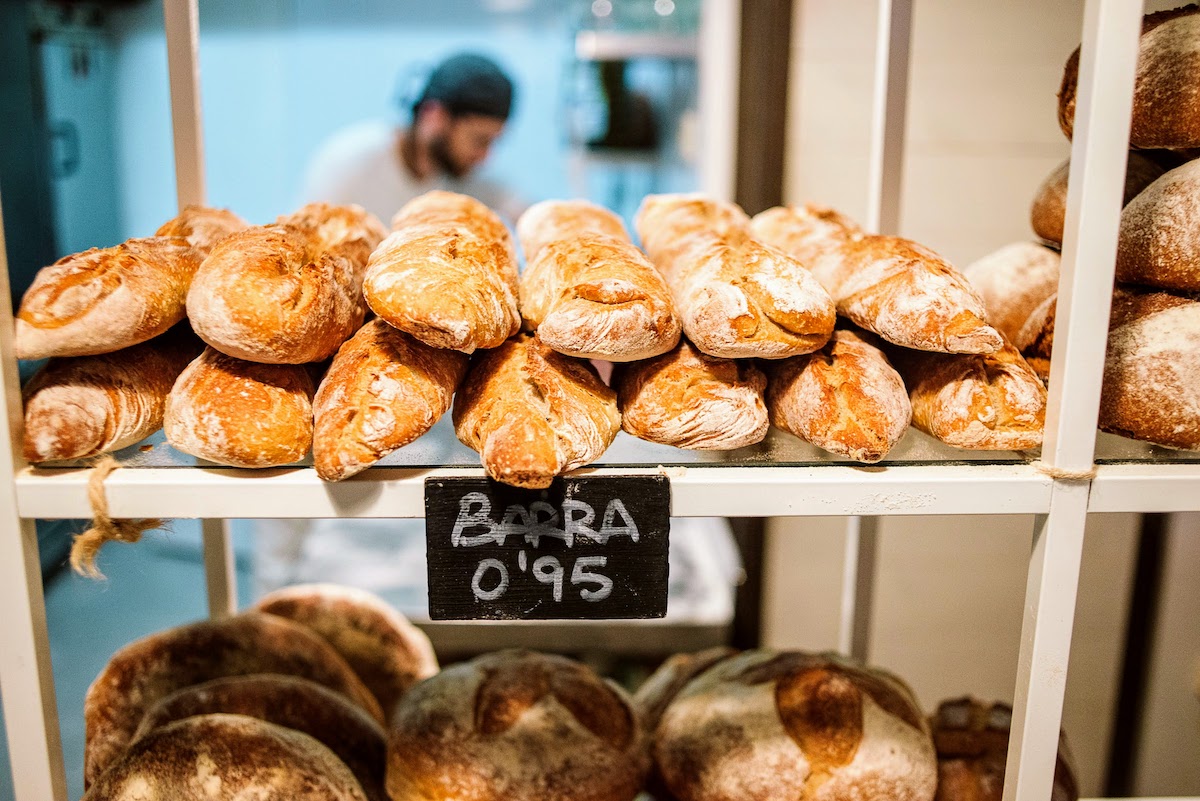
How to Spot a Good Bakery in Madrid (and in the Rest of Spain):
- Limited choices. Variety is actually not always a good thing, especially if it’s a place with few bakers. Avoid establishments with many different types of bread, but with just a few samples of each, and with only a handful of bakers. That’s an indicator that the bread isn’t actually homemade, but just baked on the premises.
- You see bakers busy at their work stations covered in flour and dough. Though it may not be baking time when you’ve dropped by, a bakery with no traces of flour anywhere should raise suspicion.
- The aroma of the place makes your taste buds sizzle before you’ve even had a bite.
- The bread you get isn’t light as a feather—the real deal should have some weight to it.
- Real bakers know their bread, and are proud of the fresh loaves and rolls they have to offer. They will lovingly share their wisdom with you regarding what to choose. If you speak a little Spanish, you’ll know you’re in the right place if the bakers there have a lot to say about what they make.

Grocery Stores in Madrid FAQs
There are plenty of large supermarkets and grocery stores in Spain. While we’ll always advocate supporting small businesses like the other types of establishments listed above, sometimes a large supermarket is the most convenient option available. They tend to have more extensive opening hours, including not closing for siesta at midday and staying open on Sundays.
Some common Spanish and European grocery chains you’ll spot in Madrid are Mercadona, Carrefour, Día, Lidl, El Corte Inglés, Eroski, Alcampo, and Ahorramas.
Many Spaniards buy most of their groceries either at local neighborhood markets, or at smaller shops specializing in a particular product (greengrocers, butchers, bakeries, etc.).
Almost all large supermarket chains in Spain offer home delivery options. Check with the nearest location of your preferred store to see what’s available to you.
This blog post was updated on January 31, 2023.
Whether you are here on holiday or are here for the long haul our tips should get acting like a local in no time. Fancy getting walked through the process in person? Then you should definitely take our Ultimate Spanish Cuisine tour. On it, we’ll take you to one of the most iconic markets in the center of the city, plus much more!
